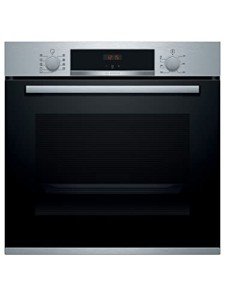A Ovens Built In Success Story You'll Never Remember
The Comprehensive Guide to Built-In Ovens: A Modern Kitchen Essential
Built-in ovens have ended up being a staple in modern kitchens, integrating aesthetics, performance, and area efficiency into a single home appliance. As house owners make every effort for both practicality and style, comprehending the features, benefits, and considerations of built-in ovens can substantially boost the cooking experience. This post looks into what built-in ovens are, their diverse types, setup factors to consider, and FAQs to help customers make notified decisions.
What is a Built-In Oven?
A built-in oven is a kitchen home appliance developed to be integrated into cabinetry, producing a streamlined, cohesive try to find the kitchen. Unlike freestanding ovens, which inhabit extra flooring space, built-in ovens are confined within wall units or cabinetry. They are readily available in various setups and sizes, allowing for tailored services that cater to the needs of varied families.
Kinds Of Built-In Ovens
Built-in ovens can be classified into different types based upon their features and cooking approaches. Here are a few of the most common types:
Single Built-In Ovens
- Best for small kitchens and homes with modest cooking requirements.
- Normally have one primary cooking compartment, developing a compact footprint.
Double Built-In Ovens
- Suitable for avid cooks and larger families.
- Features 2 different cooking compartments for flexible meal preparation.
Wall Ovens
- Set up at eye level for easy access.
- These ovens frequently include convection technology for even cooking results.
Steam Ovens
- Usage steam to cook food, protecting moisture and nutrients.
- Great for health-conscious individuals.
Combination Ovens
- Combine microwave and conventional oven functionalities.
- Offer flexibility for quick meals and conventional baking.
Italian or European Style Ovens
- Frequently designed with distinct looks and advanced cooking technologies.
- Popular for high-end kitchen styles.
Advantages of Built-In Ovens
Built-in ovens offer an array of benefits that appeal to modern-day property owners looking for both performance and aesthetics. Some of these advantages consist of:
- Space Efficiency: Built-in ovens save important counter area, which is particularly beneficial in smaller cooking areas.
- Boosted Aesthetics: With a customized appearance, built-in ovens improve the overall style of the kitchen while offering a seamless combination with cabinets.
- Flexible Cooking Capacity: Available in numerous sizes, these ovens cater to the cooking needs of different homes, from single occupants to large households.
- Availability: The installation at eye level makes built-in ovens much easier to access, reducing the threat of spills or injuries when putting or eliminating hot meals.
- Lower Energy Consumption: Many built-in ovens featured energy-efficient modes that help in reducing electric consumption over time.
Setup Considerations
Installing a built-in oven requires careful planning and factor to consider. Here are some aspects to bear in mind:
- Dimensions: Before buying a built-in oven, measure the area offered to make sure an appropriate fit. Built-in ovens been available in specific basic sizes, so it is crucial to pick the best one.
- Ventilation: Adequate ventilation is required for efficient operation. Make sure there is a correct exhaust system that complies with local building codes to prevent getting too hot.
- Electrical Requirements: Built-in ovens may require specific electric outlets or circuitry. Speak with a qualified electrical contractor to make sure that the installation adheres to security standards.
- Expert Installation: Although some house owners decide for DIY setup, working with an expert can assist make sure security and correct setup for ideal performance.
Maintenance Tips for Built-In Ovens
Maintaining your built-in oven not only extends its life expectancy but also ensures effective operation. Here are some vital upkeep tips:
Regular Cleaning:
- Wipe down interior surfaces after each use to avoid buildup.
- Usage vinegar and baking soda for non-toxic cleaning.
Check Seals:
- Inspect the door seals to avoid heat loss.
- Change damaged seals quickly.
Test Thermostat:
- Periodically check the temperature level precision with an oven thermometer. Change settings as necessary.
Service Annually:
- Schedule expert maintenance once a year to check electrical components and make sure safe operation.
Maintenance Task
Frequency
Purpose
Clean interior
After each use
Avoid accumulation and odors
Inspect seals
Month-to-month
Guarantee no heat gets away
Test thermostat
Every 6 months
Check temperature precision
Professional service
Every year
Ensure optimum efficiency
FAQs About Built-In Ovens
1. Do built-in ovens can be found in different sizes?Yes, built-in built in gas oven and hob are offered in different sizes to fit different kitchen configurations and cooking requirements. It is vital to measure the offered space before purchasing. 2. Can built-in ovens be utilized as routine ovens?Absolutely. Built-in ovens function like regular ovens,
allowing you to bake, broil, and prepare a variety of meals. 3. Are built-in ovens energy-efficient? Many built-in ovens featured energy-saving features and are developed to use less
electricity than freestanding designs. 4. For how long does integrated oven and hob take?Installation time can differ based on intricacy however usually ranges from 1 to 3 hours. It is advisable to work with a professional for ideal results. 5. What is the life-span of a built-in oven?With proper maintenance, built-in ovens can last anywhere from 10 to 15 years or longer.
Built-in ovens provide a multitude of benefits for modern homes, integrating convenience, energy effectiveness, and elegant style into one solution.
When picking and setting up a built-in oven, it's important to consider the type that best fits your cooking habits, offered space, and visual preferences. By understanding the benefits, setup requirements, and upkeep needed, house owners can elevate their cooking experience and produce sensational kitchen areas that impress both household and guests alike. Purchasing a built-in oven can be an advantageous addition that streamlines cooking, enhances home worth, and savors cooking thrills for several years to come. 